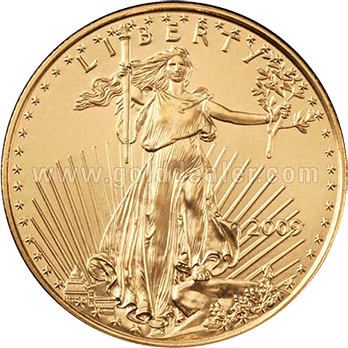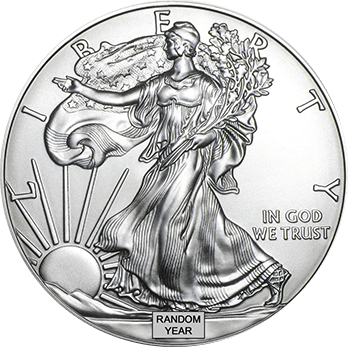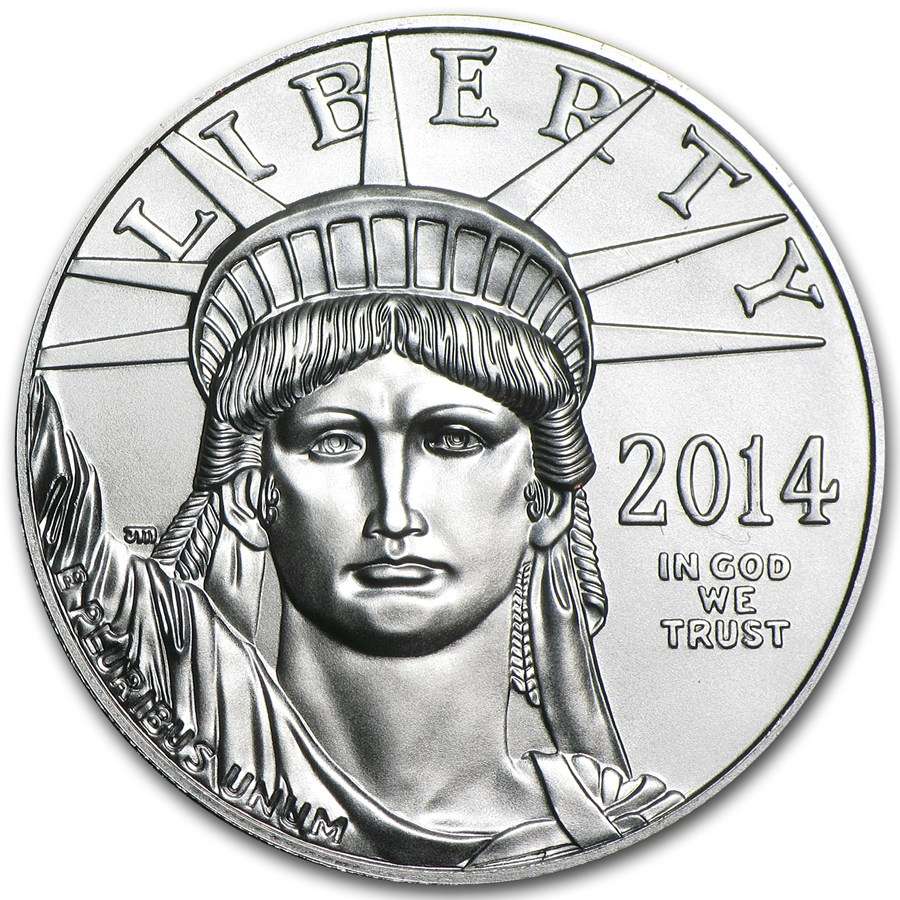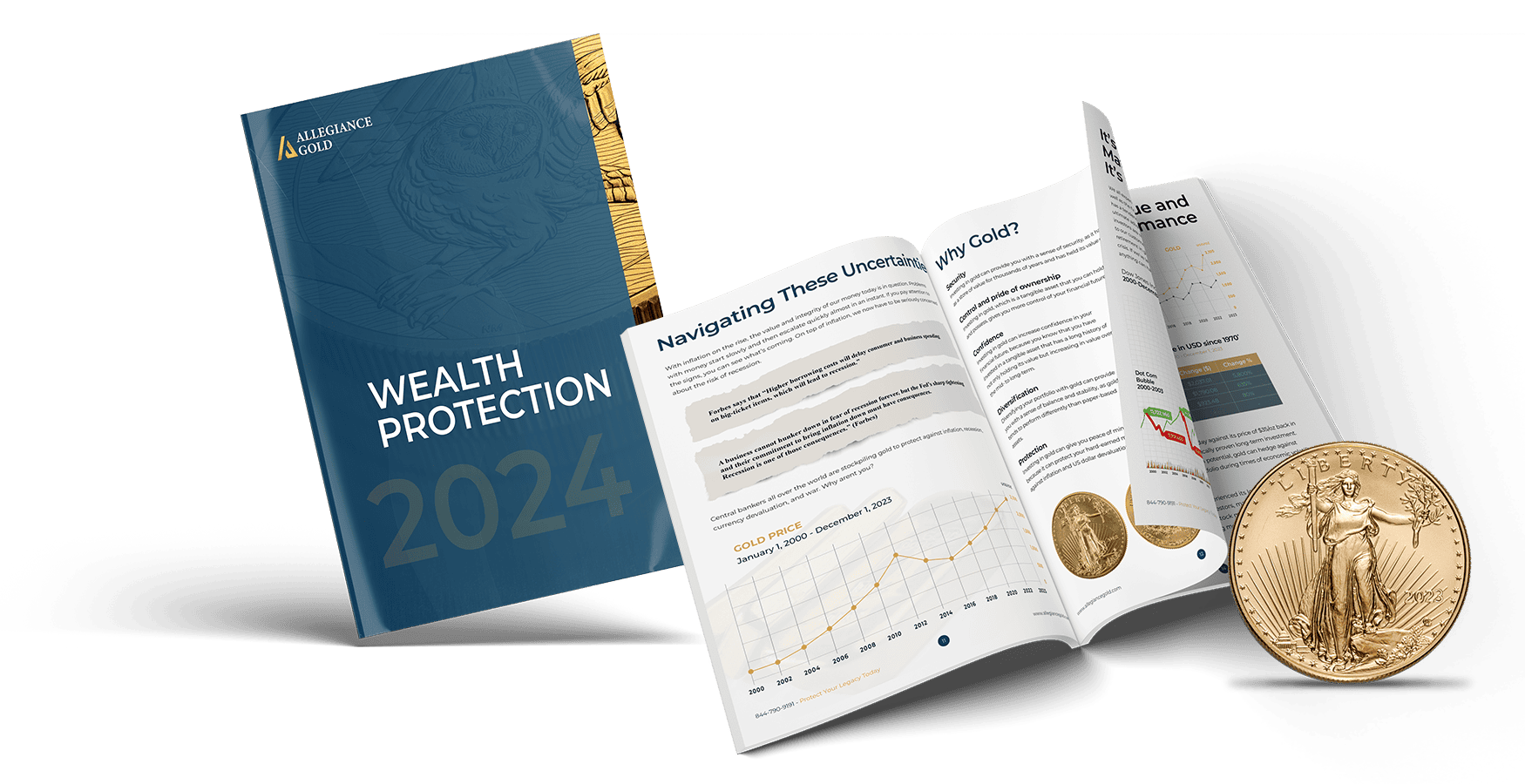In addition to physical ownership, precious metals can be acquired via paper assets known as Gold ETFs.
ETFs (Exchange Traded Funds) are paper stocks that are backed by an underlying asset, in this case Gold, with the most-traded Gold ETF being the ticker symbol “GLD.” While a Gold ETF may be backed by Gold, it’s not the same thing as owning physical Gold. Because investing in ETFs is like buying stock in Gold, the value of these assets fluctuates with the market value of Gold, but you can never exchange the ETF for actual Gold (or any other precious metal).
ETFs are ideal for frequent traders as they offer the convenience of investing in various assets without the need for physical ownership or associated storage costs. ETFs do, however, come with recurring, annual fees that deduct a percentage of the investment’s value to cover management and administrative expenses. The leading ETF, SPDR Gold Shares’ (GLD), charges an annual fee of 0.40% and a transaction fee for each share traded.
In addition to a lack of physical ownership, the second primary limitation of a Gold ETF lies in its impracticality as a long-term investment option due to the commonly associated practice of intraday trading, where buying and selling occur within the same day to profit from short-term price fluctuations. Thus, Gold ETFs restrict the potential benefits of Gold as a long-term store of value and hedge against economic uncertainties.
For investors seeking enhanced control and a clear understanding of common law property rights, the choice is clear: owning physical precious metals stored under their name in a vault or secured depository, rather than navigating the intricacies of a complex network of securities with limited redemption rights. This fundamental distinction sets apart owning precious metals from ETFs.
It is important to note that there have been numerous instances where sponsors of Gold ETFs abruptly suspended redemptions or imposed restrictions on shareholders, preventing them from accessing or purchasing more of the underlying security. The actions of the iShares Gold Trust (IAU) in March 2016 illustrate this phenomenon.
The following Chart highlights the difference between physical Gold and Gold ETFs.
| |
Gold ETFs |
Physical Gold |
| Type of Asset |
Paper asset with an underlying investment in precious metals |
The actual physical metal |
| Physical Possession |
No redemption options for average investors; major holders above $10 million can choose Gold or cash redemption |
Yes |
| Portable |
No |
Yes |
| Risk associated with stock market |
Vulnerable to financial systems while lacking physical security |
Considered a safe haven asset, especially during market crashes |
| Liquidity |
Only highly liquid under normal market conditions; becomes illiquid during market crashes |
Very liquid in both normal and abnormal market conditions |
| Fees |
A) Commission extracted from every buy and sell trade
B) Annual Fee .40% for on-going management |
One-time dealer premium at purchase
No Annual Fee |
| Privacy & Reporting Requirements |
Must report
Regulated by the SEC and FINRA
Personal information required at account opening |
Potentially no reporting requirements when purchased
Limited or no reporting requirements when sold
Very Private and unobtrusive |
How To Best Acquire Gold And Silver
Owning physical Gold and Silver is a superior long-term investment option over investing in ETFs. Unlike paper assets, physical precious metals cannot be printed by central banks. They play a pivotal role in genuine diversification and serve as a safeguard for retirement savings against vulnerabilities in financial systems.
Beginner Gold and Silver investors are encouraged to start with a combination of bars, bullion, and investment-grade coins minted by recognized national mints. Allegiance Gold works directly with the most renowned mints such as the U.S. Mint and Royal Canadian Mint.


 Custom Precious Metals IRA
Custom Precious Metals IRA



